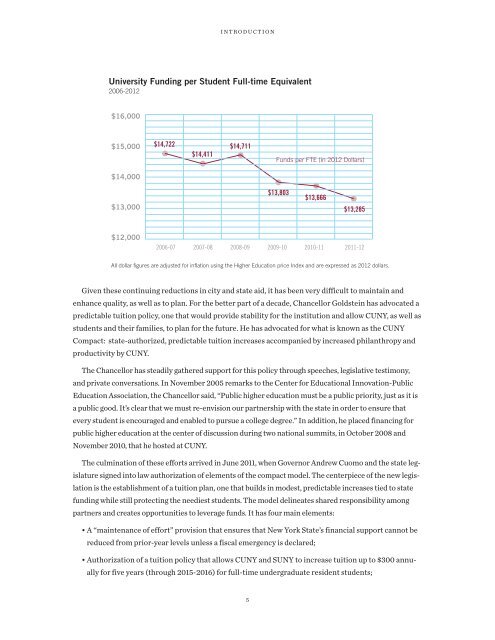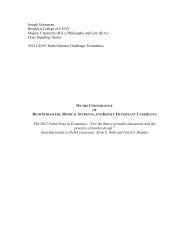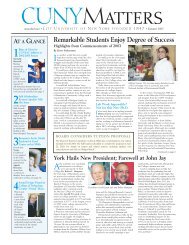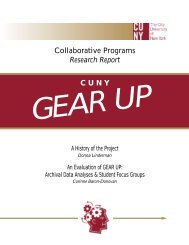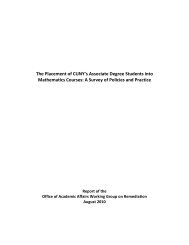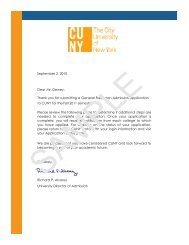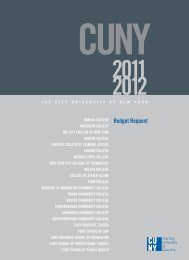CUNY Master Plan 2012-2016
CUNY Master Plan 2012-2016
CUNY Master Plan 2012-2016
Create successful ePaper yourself
Turn your PDF publications into a flip-book with our unique Google optimized e-Paper software.
INTRODUCTION<br />
University Funding per Student Full-time Equivalent<br />
2006-<strong>2012</strong><br />
$16,000<br />
$15,000<br />
$14,722<br />
$14,411<br />
$14,711<br />
Funds per FTE (in <strong>2012</strong> Dollars)<br />
$14,000<br />
$13,000<br />
$13,803<br />
$13,666<br />
$13,285<br />
$12,000<br />
2006-07 2007-08 2008-09 2009-10 2010-11 2011-12<br />
All dollar figures are adjusted for inflation using the Higher Education price Index and are expressed as <strong>2012</strong> dollars.<br />
Given these continuing reductions in city and state aid, it has been very difficult to maintain and<br />
enhance quality, as well as to plan. For the better part of a decade, Chancellor Goldstein has advocated a<br />
predictable tuition policy, one that would provide stability for the institution and allow <strong>CUNY</strong>, as well as<br />
students and their families, to plan for the future. He has advocated for what is known as the <strong>CUNY</strong><br />
Compact: state-authorized, predictable tuition increases accompanied by increased philanthropy and<br />
productivity by <strong>CUNY</strong>.<br />
The Chancellor has steadily gathered support for this policy through speeches, legislative testimony,<br />
and private conversations. In November 2005 remarks to the Center for Educational Innovation-Public<br />
Education Association, the Chancellor said, “Public higher education must be a public priority, just as it is<br />
a public good. It’s clear that we must re-envision our partnership with the state in order to ensure that<br />
every student is encouraged and enabled to pursue a college degree.” In addition, he placed financing for<br />
public higher education at the center of discussion during two national summits, in October 2008 and<br />
November 2010, that he hosted at <strong>CUNY</strong>.<br />
The culmination of these efforts arrived in June 2011, when Governor Andrew Cuomo and the state legislature<br />
signed into law authorization of elements of the compact model. The centerpiece of the new legislation<br />
is the establishment of a tuition plan, one that builds in modest, predictable increases tied to state<br />
funding while still protecting the neediest students. The model delineates shared responsibility among<br />
partners and creates opportunities to leverage funds. It has four main elements:<br />
• A “maintenance of effort” provision that ensures that New York State’s financial support cannot be<br />
reduced from prior-year levels unless a fiscal emergency is declared;<br />
• Authorization of a tuition policy that allows <strong>CUNY</strong> and SUNY to increase tuition up to $300 annually<br />
for five years (through 2015-<strong>2016</strong>) for full-time undergraduate resident students;<br />
5


